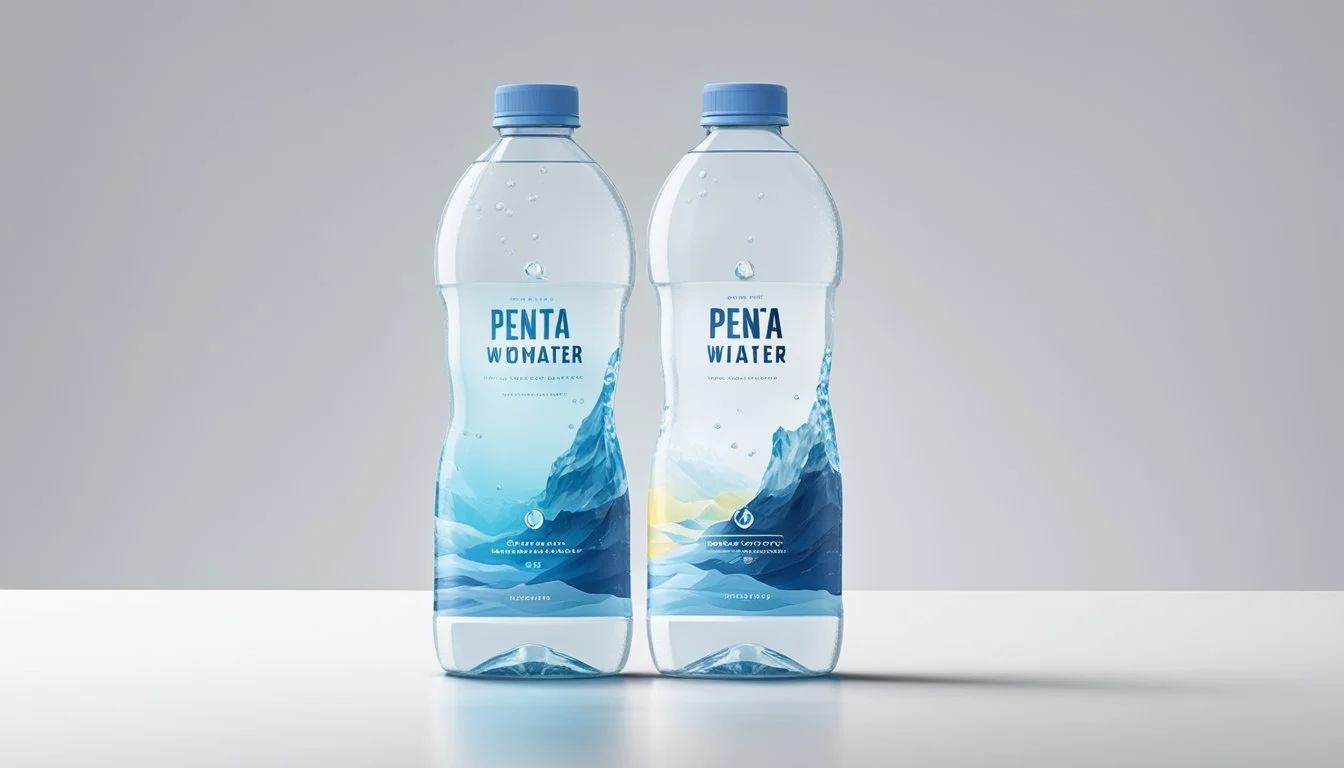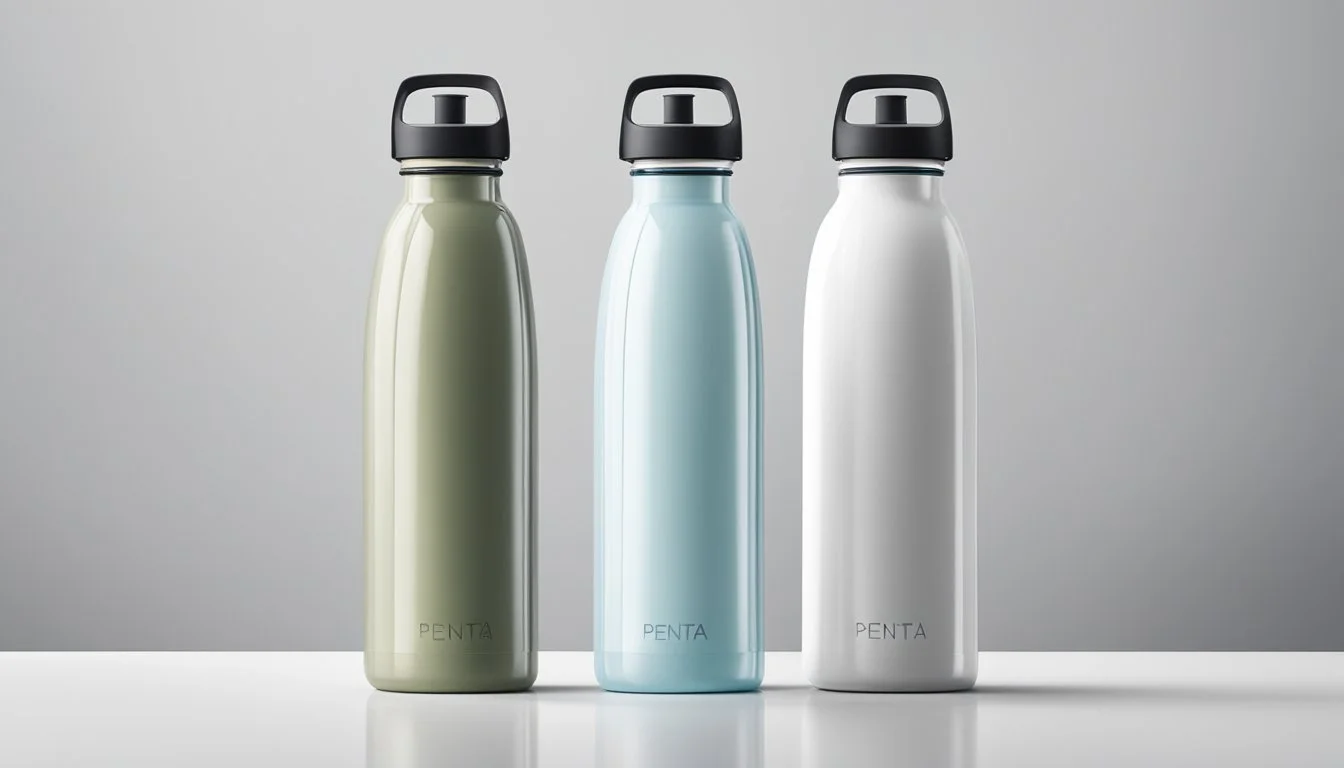Penta vs. Open Water
Comparing Quality and Benefits
Choosing the right bottled water can significantly impact both health and environmental sustainability. Penta and Open Water are two prominent brands that cater to different consumer needs. For those prioritizing purity, Penta water is often praised for its ultra-purified quality, undergoing a rigorous 13-step purification process.
On the other hand, Open Water stands out for its commitment to eco-friendliness. Packaged in 100% recyclable aluminum bottles, it aims to reduce plastic waste significantly. This focus on sustainability can make Open Water the preferred choice for environmentally-conscious consumers.
By weighing the benefits of Penta’s purification process against Open Water’s environmental initiatives, readers can make an informed decision on which bottled water aligns best with their values and needs.
Understanding Bottled Water
Bottled water comes in various forms, each with its own unique qualities and benefits. Important aspects include its history, types, sources, and regulatory standards.
History of Bottled Water
Bottled water dates back to the mid-18th century when the first commercial efforts began in the United States and Europe. Companies like Apollinaris from Germany and Mountain Valley Spring Water from the U.S. were early pioneers.
By the late 20th century, technological advances in purification and packaging spurred rapid growth in the industry. Today, bottled water is widely consumed due to its convenience, variety, and perceived purity.
Types of Bottled Water
Several types of bottled water cater to different preferences and uses:
Spring Water: Originates from an underground aquifer, flowing naturally to the surface.
Mineral Water: Contains natural minerals and trace elements.
Purified Water: Undergoes filtration processes like distillation, deionization, or reverse osmosis.
Alkaline Water: Has a higher pH level than regular water, often achieved through ionization.
Distilled Water: Created through boiling and condensation, removing impurities and minerals.
Tap Water: Filtered tap water, often marketed for its convenience and safety.
Water Source and Natural Composition
Bottled water sources vary, including natural springs, wells, and municipal supplies. Each source influences the water's composition and taste.
Spring Water: Derived from natural springs, retaining essential minerals.
Mineral Water: Must contain specific mineral content, naturally or through fortification.
Purified Water: Sourced from any type of water but subjected to extensive processing to remove impurities.
Alkaline Water: May come from springs or undergo artificial ionization to achieve desired pH levels.
Distilled Water: Pure H₂O with no dissolved minerals.
Regulatory Standards and Safety
Various organizations regulate bottled water to ensure safety and quality:
U.S. FDA: Sets standards for bottled water in the U.S., ensuring it meets safe consumption criteria.
EPA: Regulates tap water but its standards influence bottled water.
European Union: Implements strict regulations similar to the U.S. to ensure bottled water safety.
International Bottled Water Association (IBWA): Provides additional quality guidelines followed by its members.
These standards cover processing, bottling, labeling, and distribution. Regular testing ensures compliance, providing consumers with confidence in bottled water's safety.
Analyzing Penta and Open Water Brands
When comparing Penta and Open Water branded bottled waters, it's important to consider aspects such as purification processes, mineral content, and packaging strategies. Each brand offers unique benefits tailored to different hydration needs and preferences.
Brand Overview: Penta
Penta is renowned for its rigorous purification process, taking 11 hours and comprising 13 steps to ensure ultra-pure water. This method removes most minerals and impurities, resulting in a clean taste that closely resembles tap water.
Penta focuses on hydration without the addition of essential minerals like calcium, magnesium, or potassium. This makes it a suitable option for those seeking pure water without added electrolytes. Additionally, it has been suggested that Penta's water may offer skin hydration benefits, though more research is needed.
Brand Overview: Open Water
Open Water stands out for its commitment to sustainability. Packaged in 100% recyclable aluminum bottles, it aims to reduce plastic waste significantly.
Open Water emphasizes hydration while also being conscious of environmental impact. Their water is purified through reverse osmosis and UV treatment ensuring high-quality water free from contaminants. Unlike Penta, Open Water retains some naturally occurring electrolytes, which can be beneficial for prolonged hydration.
Overall, Open Water appeals to environmentally-conscious consumers who also value clean and refreshing water with some mineral content for added health benefits.
Quality and Purity Factors
When comparing Penta and Open Water, it's crucial to evaluate their quality and purity. These factors greatly influence consumer choice and health impacts, making them essential considerations.
Filtration and Purification Techniques
Penta and Open Water employ distinct filtration and purification methods to ensure the highest quality. Penta uses a proprietary 13-step purification process that includes advanced reverse osmosis and oxygenation. This meticulous procedure aims to remove impurities and enhance the water's purity.
Open Water also prioritizes purity through a multi-step filtration process. Their approach includes reverse osmosis and UV light treatment to eliminate contaminants effectively. The detailed purification techniques contribute significantly to the water's overall quality and safety for consumers.
Total Dissolved Solids and pH Levels
Total Dissolved Solids (TDS) and pH levels are critical indicators of water quality. Penta is known for its low TDS levels, often close to zero, which indicates minimal impurities. This low TDS level is a result of their extensive filtration process.
The pH level of Penta water is typically around 7, indicating a balanced, neutral pH. Open Water, on the other hand, also features low TDS levels due to its rigorous purification process. The pH level of Open Water aligns closely with natural spring water, usually ranging between 7.2 and 7.8, providing a slightly alkaline option that some consumers prefer.
Presence of Additives
The presence of additives in bottled water can affect taste and perceived purity. Penta Water prides itself on being free from additives, focusing solely on providing purified water. Their process ensures that no additional minerals or chemicals are introduced, promising a pure drinking experience.
Open Water maintains a similar approach, emphasizing purity and safety. They avoid adding any unnecessary substances, ensuring that the final product remains true to its source. This commitment to a clean and additive-free product is a significant factor for health-conscious consumers choosing between these two brands.
Health and Hydration
When comparing Penta and Open Water, it's essential to look at their effects on health and hydration. These factors are vital for anyone considering bottled water for their daily needs or athletic performance.
Hydration and Electrolyte Balance
Hydration is crucial for maintaining overall health, and the electrolyte balance in water can impact its effectiveness. Penta water undergoes a proprietary process that removes impurities, potentially aiding rapid absorption. It does not add electrolytes, meaning it might not be the best choice for those seeking electrolyte replenishment after intense exercise.
Open Water, on the other hand, contains natural electrolytes. This helps with hydration by restoring essential minerals like sodium and potassium. Athletes may find Open Water's electrolyte content particularly beneficial for maintaining hydration levels and preventing cramps during workouts.
Health Benefits of Quality Water
Consuming high-quality water can contribute positively to one's health. Penta water, known for its purity and higher pH, claims to offer better hydration and detoxification. The absence of impurities might appeal to those looking for clean water without additives.
Open Water's inclusion of electrolytes can also offer health benefits, especially for those with active lifestyles. These natural minerals not only aid in hydration but also support nerve function and muscle health. Ensuring the body receives adequate electrolytes helps maintain various physiological functions, making Open Water a compelling choice for health-conscious individuals.
Environmental Considerations
Evaluating the environmental impact of Penta and Open Water involves looking at their use of plastic bottles, the sustainability of their materials, and their recycling programs.
Impact of Plastic Bottles
Penta uses plastic bottles made from BPA-free materials, assuring consumers of a safer choice. Despite this, plastic bottle usage contributes significantly to environmental pollution. Plastic production consumes large amounts of fossil fuels, releasing greenhouse gases.
Open Water opts for aluminum cans, which are infinitely recyclable. Unlike plastic, aluminum can be repeatedly recycled without degrading, reducing waste. However, aluminum production also has environmental costs, though its recyclability somewhat mitigates this impact.
Sustainability and Recycling Programs
Penta focuses on water purity but does not emphasize sustainability in its packaging. While BPA-free plastic is safer for consumers, plastic's recyclability is limited. Most plastics degrade in quality, reducing their usability over time. This cycle leads to more plastic waste and environmental degradation.
Open Water emphasizes its commitment to reducing plastic waste. Aluminum, as a sustainable material, can be recycled repeatedly without losing quality. Open Water also participates in various recycling programs, encouraging consumers to recycle their cans, further promoting sustainability.
Consumer Experience
Consumers' experiences with Penta and Open Water are influenced by various factors including taste and flavor profiles, as well as packaging and brand value. Understanding these aspects helps to determine which bottled water offers a better overall experience.
Taste and Flavor Profiles
Penta Water: Penta prides itself on offering an ultra-pure drinking experience. The water goes through a patented 13-step purification process, ensuring it is free from contaminants and impurities. This results in a taste described as clean and crisp, with no detectable flavors that could affect the palate.
Open Water: Open Water, sourced from municipal supplies, undergoes rigorous purification as well, resulting in a neutral taste profile. The brand emphasizes freshness and lacks any off-putting aftertaste. Tasters often describe it as smooth and refreshing, appealing to those who prefer a straightforward water experience.
Packaging and Brand Value
Penta Water: Penta uses BPA-free plastic bottles, ensuring safety while maintaining durability. The sleek, clear bottles are designed to reflect the purity of the water inside, reinforcing the brand's premium image. Penta is marketed towards consumers seeking high-quality water and purity, making it a popular choice in high-end markets.
Open Water: Open Water sets itself apart with its eco-friendly aluminum bottles. These cans are not only 100% recyclable but also offer a sustainable alternative to single-use plastics. The brand leverages its environmental focus to attract eco-conscious consumers. The packaging’s modern design enhances its appeal on retail shelves, providing strong brand value for those prioritizing sustainability.
Throughout these considerations, each brand offers distinct advantages that cater to different consumer preferences.
Market Analysis
Examining the market reveals the competitive dynamics and consumer preferences between Penta and Open Water, both aiming for distinct niches in the bottled water market.
Competitive Landscape
In the competitive bottled water market, Penta and Open Water face stiff competition from brands such as smartwater, Evian, Fiji, and LIFEWTR. Penta’s unique selling point is its 13-step purification process, targeting consumers who prioritize ultra-pure water.
Open Water focuses on sustainability, using aluminum bottles to reduce plastic waste, aiming to attract environmentally conscious consumers.
Penta leverages its proprietary purification process to differentiate itself from brands like Aquafina and Dasani, which primarily use basic filtration. Open Water appeals to a growing segment of eco-friendly consumers, competing with brands like Boxed Water and JUST Water.
Several premium brands, including Voss and Acqua Panna, maintain strong market positions through branding and perceived luxury, placing both Penta and Open Water in a unique competitive category that balances purity and sustainability.
Consumer Trends and Preferences
Consumers increasingly seek bottled water that addresses health and environmental concerns. Penta targets those focused on water purity, providing ultra-purified water free from contaminants, engaging health-conscious buyers.
Open Water appeals to eco-friendly consumers, emphasizing its use of recyclable aluminum bottles to reduce environmental impact.
The market also shows a surge in demand for premium water brands like Evian and Fiji, known for their exceptional quality and unique sources. Brands such as Mountain Valley Spring Water and Icelandic Glacial tap into the niche market for naturally sourced and minimally processed water.
Penta’s consumer base values rigorous purification standards, while Open Water attracts those prioritizing sustainability, positioning both brands effectively to capture specific segments of the market. LIFEWTR and smartwater engage consumers through innovative packaging and added benefits, shaping broader consumer trends.
Conclusion
When deciding between Penta and Open Water, various factors come into play.
Penta emphasizes water purity, undergoing a rigorous 13-step purification process. This results in ultra-pure water free of contaminants.
Open Water capitalizes on sustainability. Packaged in recyclable aluminum bottles, it aims to reduce plastic waste while offering crisp, refreshing hydration.
Hydration and Taste:
Penta: Known for its clean, pure taste without any aftertaste.
Open Water: Offers a fresh taste, with no lingering flavors.
Packaging:
Penta: Uses BPA-free plastic bottles, ensuring consumer safety.
Open Water: Uses aluminum bottles, promoting environmental sustainability.
Environmental Impact:
Penta: While using plastic, they prioritize safety with BPA-free materials.
Open Water: Stands out with fully recyclable and environmentally friendly aluminum packaging.
Cost:
Penta: Generally positioned as a premium product, with a higher price point due to its extensive purification process.
Open Water: Competitive pricing, providing an eco-friendly choice without significantly higher costs.
In conclusion, the better choice between Penta and Open Water largely depends on individual priorities. Those prioritizing purity and taste may lean towards Penta, while eco-conscious consumers might prefer Open Water. Both brands offer distinct benefits, catering to different aspects of consumer needs.
More About Penta
Mountain Valley Spring Water vs Penta: Which Bottled Water is Better?
Penta vs Richard's Rainwater: Which Bottled Water is Better?
Penta vs Whole Foods Italian Still Mineral water: Which Bottled Water is Better?
More About Open Water
Aqua Carpatica vs Open Water: Which Bottled Water is Better?
Cascade Mountain vs Open Water: Which Bottled Water is Better?
Core Hydration vs Open Water: Which Bottled Water is Better?
Crystal Geyser vs Open Water: Which Bottled Water is Better?
Hawaii Volcanic vs Open Water: Which Bottled Water is Better?
Hawaiian Springs vs Open Water: Which Bottled Water is Better?
Icelandic Glacial vs Open Water: Which Bottled Water is Better?
Mountain Valley Spring Water vs Open Water: Which Bottled Water is Better?
Nestle Pure Life vs Open Water: Which Bottled Water is Better?
Open Water vs Kirkland Signature: Which Bottled Water is Better?
Open Water vs Whole Foods 365: Which Bottled Water is Better?
Richard's Rainwater vs Open Water: Which Bottled Water is Better?
San Pellegrino vs Open Water: Which Bottled Water is Better?
Solan de Cabras vs Open Water: Which Bottled Water is Better?
Talking Rain AQA vs Open Water: Which Bottled Water is Better?
Whole Foods Italian Still Mineral water vs Open Water: Which Bottled Water is Better?








